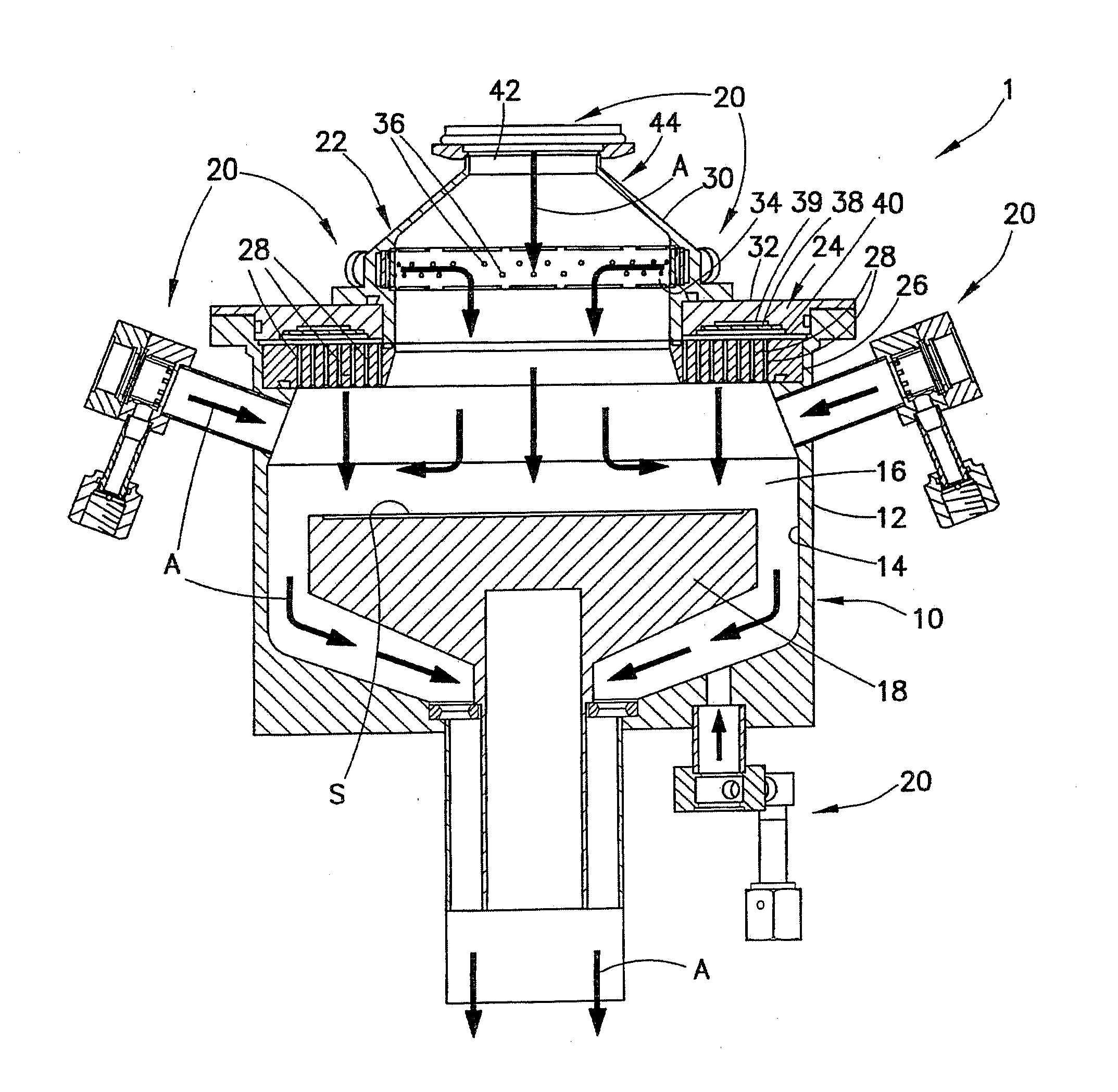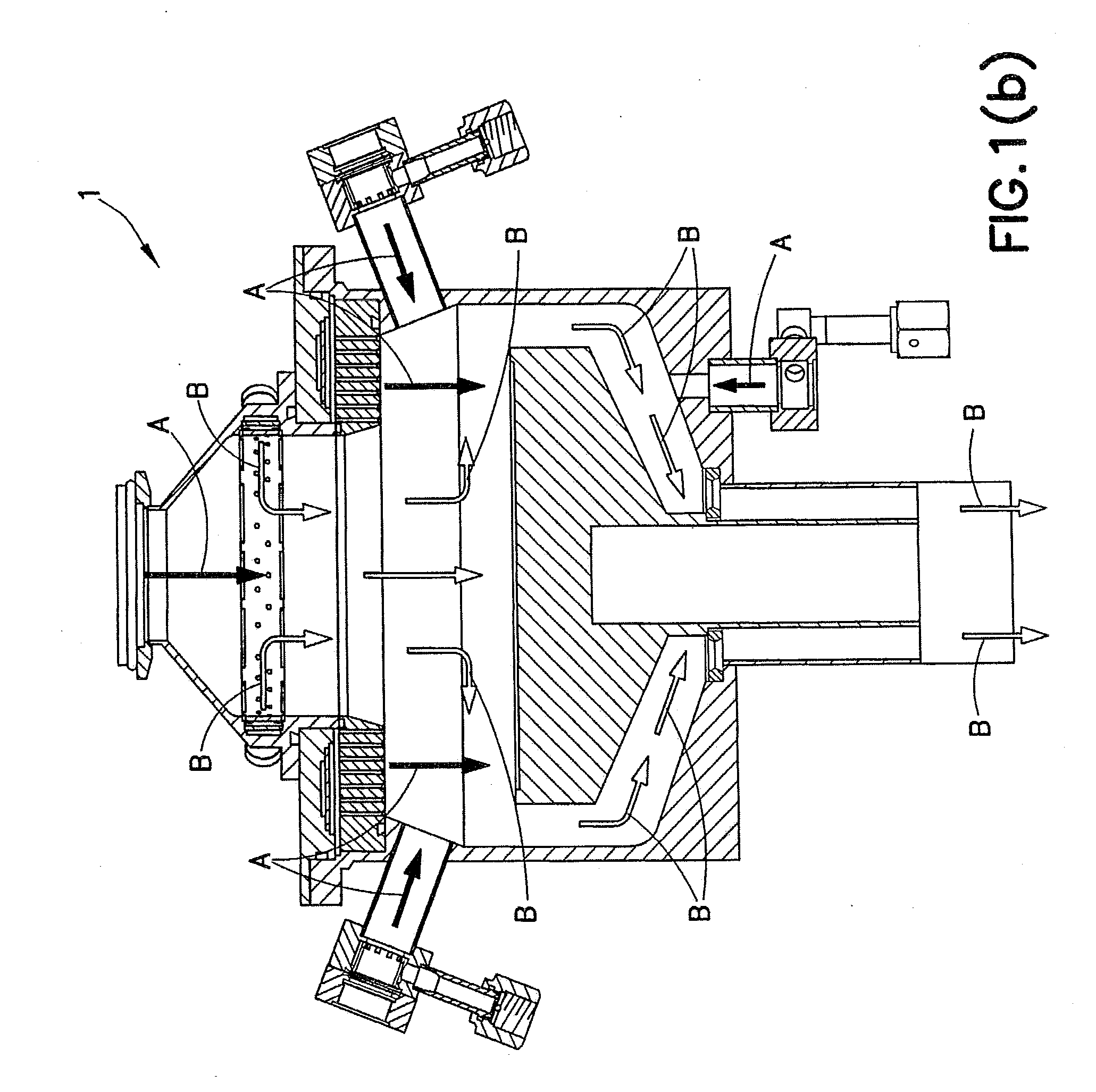Once the surface becomes fully passivated, reactions are complete and result in the formation of a limited number of new surface species.
Outside of this temperature window, growth becomes non-ideal.
At temperatures below the ALD window,
thermal energy at the
substrate surface becomes insufficient for surface reactions and / or to prevent physical adsorption (or condensation) of precursor molecules.
Thermal self-
decomposition of precursor molecules and / or
desorption of chemically-adsorbed surface species result in non-ideal growth at higher substrate temperatures.
One known limitation of existing ALD
processing is the relatively low
throughput due to long process times when compared to PVD and conventional CVD methods.
Another
disadvantage is the limited number of precursors presently available and, therefore, materials deposited by ALD methods.
These sources of non-uniformity include overlapping of precursor pulses, non-uniform precursor delivery, and precursor thermal self-
decomposition.
In addition, reaction byproducts have been shown to contribute to film non-uniformity.
Adequate purging between precursor pulse steps is critical, since overlapping of pulses results in parasitic CVD surface reactions that decrease film uniformity and increase the potential for
gas phase reactions and associated film defects.
Furthermore, ALD surface
chemistry is not always ideal, such that film uniformity depends on distribution of precursor across the
substrate surface during pulse steps.
It is also very important to prevent deposition of absorbing
layers on this surface, since this will result in attenuation of the RF
signal and subsequent
plasma source failure.
Isolation of the
plasma generation region from precursors (other than plasma process gases) may be achieved by incorporating an
isolation valve; however, the
cycling of an
isolation valve during ALD can produce particles resulting in unwanted film defects.
Like plasma, the integration of these features increases
chamber design complexity and volume.
Problems associated with the integration of chamber ports necessary for SE include
coating of the transparent windows resulting in attenuation of
transmitted light, as well as more complex chamber geometry and additional volume that increases required purge times.
Similar to ports for SE integration, this additional port for substrate transfer increases
chamber design complexity and volume and, therefore, required purge times.
In some cases, these relatively simple systems enable thermal processes only and have no diagnostic or vacuum transfer capability.
First, for plasma to be “remote” there must necessarily be sufficient spatial separation between the plasma generation region and
substrate surface.
In addition, spatial confinement of the plasma results in
quenching of active species necessary for ALD surface reactions.
These enhanced
system features, however, significantly increase process chamber design complexity to maintain ALD process performance.
If these gate valves are not closed during precursor pulse steps, then the transparent windows for SE
light transmission can become coated, resulting in limited ability to monitor process due to
signal attenuation.
Similar
signal attenuation issues can occur when the
remote plasma source is not properly protected during precursor pulse steps.
This is due to deposition of absorbing materials on the transparent
dielectric window resulting in plasma source failure.
According to certain existing systems, the
cycling of mechanical valves during
processing can generate particles that result in unwanted film defects.
In particular,
remote plasma source isolation can be most problematic since a
gate valve is typically positioned directly above the substrate surface where particles tend to rain down onto the surface when the valve is cycled.
In cases where an inactive
gas barrier is used to prevent film deposition inside the plasma source (without the use of a mechanical
gate valve), it is still difficult to prevent
diffusion of certain precursors into the plasma port during precursor pulse steps.
During precursor pulse steps,
water diffusion and subsequent condensation inside the
remote plasma port can become a source of parasitic CVD that severely limits thermal ALD process performance.
In summary, there are many challenges associated with the integration of various ALD apparatus design features.
Due to more complex process chamber geometry, as well as additional volume requirements, these enhanced
system features significantly increase apparatus design complexity to maintain ALD process performance (e.g., uniformity and cycle times).
Additional challenges associated with remote plasma integration include plasma performance issues associated with
exposure of internal plasma source components to ALD precursors (other than plasma process gases).
Similar challenges are associated with the integration of analytical ports necessary for SE, where
exposure of internal components to ALD precursors can result in issues with feature performance.
 Login to View More
Login to View More 


